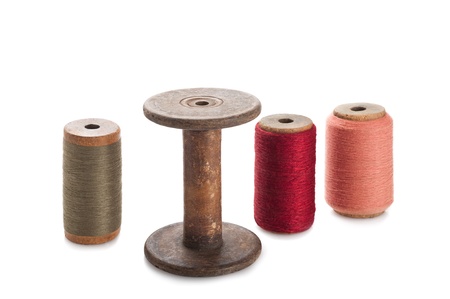Rooted in Heritage: Pendulum-Making in British History
Pendulum craftsmanship across the British Isles is deeply intertwined with local heritage, stretching back centuries and reflecting the diverse cultural tapestry of England, Scotland, Wales, and Northern Ireland. Each region has lent its own materials, techniques, and beliefs to the art of pendulum-making. In rural English villages, for instance, traditional pendulums were often fashioned from native hardwoods or river stones, prized for their natural balance and tactile warmth. Meanwhile, in the Scottish Highlands, artisans favoured indigenous crystals like cairngorm or smoky quartz, imbuing each piece with a sense of mystical purpose that resonated with Celtic traditions. These pendulums weren’t merely decorative or functional objects; they played a role in daily life—used by farmers to divine water sources or by healers in spiritual rituals. Over time, as British society evolved and absorbed influences from continental Europe and beyond, so too did the craft of pendulum-making. Yet, regional variations endured, preserving unique methods and symbolic meanings. Today, exploring these historical roots reveals not only the ingenuity of British makers but also the enduring significance of pendulums as tools bridging the practical and the spiritual—a testament to the country’s rich artisanal legacy.
Materials of Tradition: Stones, Woods, and Metals
When exploring British pendulum craftsmanship, the materials chosen are never arbitrary. Each traditional material tells a story rooted in the land’s history and local culture, enriching both the pendulum’s function and its narrative. Among the most cherished are Welsh slate, English oak, and Cornish tin—each bringing not only unique properties but also deep regional pride.
Welsh Slate: Enduring Elegance
Welsh slate has been quarried for centuries and is celebrated for its durability and fine grain. In pendulum making, this stone provides a subtle weight and an earthy visual appeal, resonating with those who value steadfastness and connection to ancient landscapes. Welsh slate pendulums often serve as both divinatory tools and tactile reminders of Wales’ rugged beauty.
English Oak: The Heart of Heritage
Oak trees have long symbolised strength and endurance in British folklore. English oak, particularly from ancient woodlands, is prized for its warm hues and intricate grain patterns. Pendulums crafted from oak carry echoes of Druidic traditions and the wisdom of old forests, making them favourites among those seeking grounding energy in their practice.
Cornish Tin: From Deep Earth
The mining heritage of Cornwall is legendary. Cornish tin, once central to the region’s economy, lends a distinctive silvery sheen to pendulum designs. Its use pays homage to generations of miners and metallurgists, infusing each piece with a sense of resilience and industrious spirit.
Comparative Overview of Traditional Materials
| Material | Region | Cultural Significance | Properties in Pendulums |
|---|---|---|---|
| Welsh Slate | Wales | Symbolises endurance; links to ancient quarries | Smooth texture; moderate weight; earthy tones |
| English Oak | England | Represents wisdom & strength; sacred in folklore | Rich grain; warm colour; tactile grounding feel |
| Cornish Tin | Cornwall | Pays tribute to mining legacy; resilience | Lustrous finish; light metallic weight; historic aura |
Blending Craft with Culture
The selection of these traditional materials is more than a practical choice—it is an intentional act connecting the maker, user, and landscape. Every time a pendulum swings, it carries within it centuries of British craft knowledge, regional identity, and a sense of continuity that is uniquely local yet universally meaningful.

3. Makers and Modernity: Keeping Craft Alive
Contemporary British pendulum makers stand at a fascinating crossroads where heritage meets innovation. Across the UK, from bustling London studios to quiet Cotswolds workshops, artisans are breathing new life into traditional craftsmanship. These makers respect the time-honoured techniques passed down through generations—such as hand-turning hardwoods or meticulously finishing brass components—while daring to experiment with fresh materials and sleek designs that speak to modern sensibilities.
Visiting these makers offers an insight into how tradition is preserved not by resisting change, but by embracing it thoughtfully. For example, some craftspeople incorporate locally sourced reclaimed timber or ethically mined metals, blending sustainability with authenticity. Others collaborate with designers to create pendulums that complement minimalist interiors or reflect contemporary British aesthetics, all the while staying rooted in classic construction methods.
This ongoing dialogue between past and present is what keeps the craft alive in Britain. Artisans might use digital tools for precision yet finish each piece by hand, ensuring every pendulum has its own unique character. It’s this fusion of heritage and modernity that makes British pendulum making so compelling today—a celebration of skills honed over centuries, now adapted for a new generation of collectors and enthusiasts.
4. Ritual and Relevance: Pendulums in British Custom
Pendulums have woven their way through the tapestry of British tradition, serving not only as tools of craftsmanship but also as silent witnesses to centuries-old rituals. From the windswept moors of Cornwall to the bustling markets of Yorkshire, pendulums—crafted from native woods, Cornish tin, or even local stones—have held a unique place in both rural folklore and contemporary spiritual practice.
Dowsing: The Search for Water and Hidden Treasures
Perhaps the most quintessentially British use of pendulums lies in dowsing—a folk practice still recognised in parts of the countryside. Rural communities have long relied on pendulums fashioned from hazel twigs or copper to divine underground water sources, lost objects, and even ley lines believed to crisscross ancient landscapes. These practices, though sometimes met with scepticism, reflect a deep-rooted connection to land and tradition.
Pendulums in Divination and Spiritualism
Beyond dowsing, pendulums have played a discreet yet enduring role in British spiritualism. Victorian parlours once echoed with whispered questions posed to swinging pendulums, seeking guidance from beyond the veil. Today, modern practitioners blend these old customs with contemporary mindfulness techniques, often preferring locally crafted pendulums for their perceived energetic resonance.
Traditional Uses Across Eras
| Era | Main Use | Material Preference | Cultural Context |
|---|---|---|---|
| Medieval Period | Dowsing for water/minerals | Hazel wood, stone | Folk magic & rural survival |
| Victorian Era | Divination/Seances | Crystal, brass, silver | Spiritualism movement |
| Modern Day | Personal guidance & wellness | Locally sourced crystals & metals | Mindfulness & alternative healing |
The Contemporary Landscape: Blending Old and New
Today’s Britain sees a renaissance of interest in pendulum craft—a fusion of nostalgia for village wisdom and curiosity about holistic wellness. Artisans draw inspiration from both ancestral techniques and eco-conscious materials, while users seek authenticity by choosing hand-crafted pendulums rooted in British geology and heritage. Whether at a farmers’ market or within an urban meditation circle, the humble pendulum continues to swing between worlds—honouring history while adapting to the spiritual needs of modern Britain.
5. Sustainable Sourcing: Ethics in Material Selection
In the heart of modern British pendulum craftsmanship, the conversation has shifted from mere tradition to a conscious embrace of sustainability and ethical material sourcing. As eco-conscious craft movements gain traction across the UK, artisans are increasingly scrutinising the origins and environmental impact of their raw materials. Local woods like yew and oak, historically revered for their spiritual resonance and robust qualities, are now being harvested with an eye towards responsible forestry practices and biodiversity preservation. This shift is not merely a nod to environmental trends; it reflects a deeper cultural commitment to stewardship and authenticity within the craft.
The emphasis on locally sourced materials goes beyond reducing carbon footprints—it fosters a tangible connection between maker, material, and landscape. British pendulum-makers often collaborate directly with small-scale timber suppliers or repurpose salvaged wood, ensuring that each piece carries a story rooted in its region. By prioritising ethical supply chains and transparent provenance, these crafters support rural economies while upholding high standards of craftsmanship.
This movement is also about challenging mass-produced imports that may lack both character and accountability. Whether using Cornish tin or Scottish stone, British artisans are reclaiming agency over their resources, making conscious choices that resonate with today’s values of ecological mindfulness and social responsibility. In doing so, they not only honour tradition but also pave the way for a new chapter in pendulum-making—one where ethics and artistry coexist harmoniously.
6. Collect and Connect: The Appeal for Enthusiasts
In the world of British pendulum craftsmanship, collecting is far more than simply amassing objects—it’s a deeply rooted cultural practice that brings together enthusiasts from all walks of life. The allure lies not only in the artistry of traditional materials, such as locally sourced woods and hand-cast metals, but also in the stories each piece carries. British-made pendulums often embody a unique blend of local heritage, skilled workmanship, and individual character, making every collection as distinctive as its curator.
Across the UK, collectors’ fairs and specialist markets create vibrant spaces for aficionados to meet, trade, and discuss their latest finds. Whether it’s a Victorian-era brass pendulum with ornate engravings or a contemporary piece crafted by a rising artisan from Cornwall, each item is celebrated for its provenance and craftsmanship. These gatherings foster an atmosphere where knowledge is freely exchanged—seasoned collectors share restoration tips, historical insights, and sourcing secrets with newcomers eager to join the fold.
Online communities have further expanded these connections beyond geographical boundaries. British pendulum enthusiasts gather on forums and social platforms to showcase their prized pieces, arrange swaps or sales, and even coordinate meetups. This digital camaraderie has proven invaluable in preserving niche traditions, especially as younger generations discover the joys of collecting and maintaining heritage items.
The appeal of collecting British-made pendulums extends internationally as well. Overseas collectors often seek out British pieces for their authenticity and timeless elegance, drawn by the narrative of centuries-old techniques kept alive by passionate craftspeople. As such, British pendulum culture acts as a bridge—linking regional pride with global appreciation and inspiring a shared respect for traditional materials and methods.
Ultimately, collecting British pendulums is about more than just possession; it’s about forging connections—between people, eras, and cultures. In gathering these remarkable objects, collectors become part of an ever-growing community dedicated to celebrating the enduring beauty and ingenuity of Britain’s artisanal legacy.


